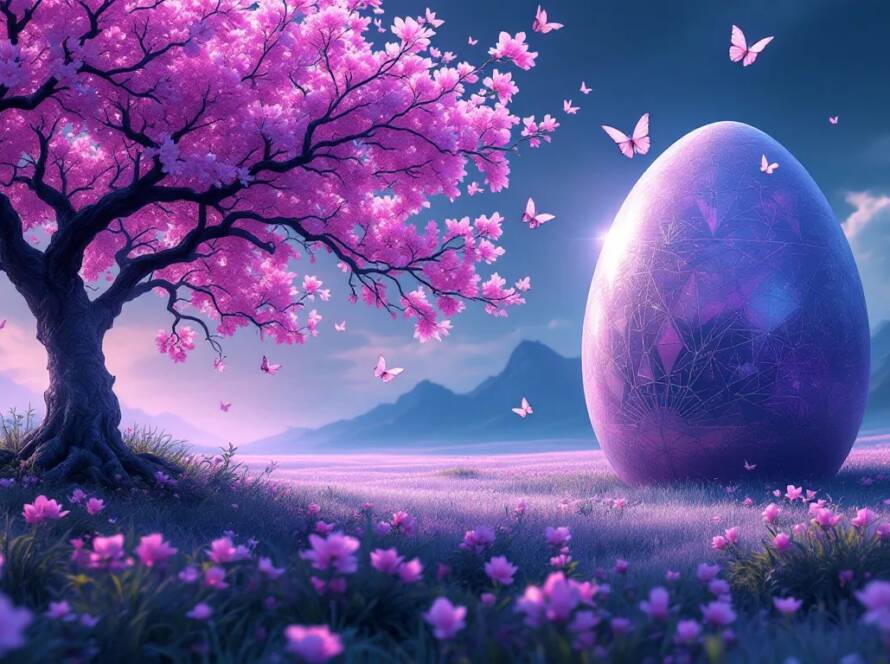Facts About Easter
These facts highlight Easter’s rich traditions and cultural significance, as well as its popularity as a festive occasion.
Name Origin: In most languages other than English and German, the name for Easter is derived from “Pesach,” the Hebrew term for Passover.
Pysanka: The traditional act of painting eggs is known as Pysanka, particularly in Eastern European cultures.
Symbolism: The Cross represents the Crucifixion of Jesus, while the Resurrection is celebrated during Easter.
Timing: The resurrection of Jesus occurred during Passover, which is an eight-day observance commemorating the Israelites’ exodus from Egypt.
Jelly Beans: Approximately 16 billion jelly beans are produced for Easter each year, making them a popular treat.
Egg Decorating Tradition: The custom of decorating eggs became prominent in 17th century Germany, where parents would leave decorated eggs for their children to find before breakfast.
Artistic Evolution: The European tradition of egg decoration evolved into fine art, particularly with the colorful gilded designs created by Ukrainian artists.
Chocolate Eggs: The first chocolate eggs were made in Europe in the early 19th century and have since become a beloved Easter treat.
Chocolate Bunnies: German immigrants in Pennsylvania are credited with creating chocolate treats shaped like bunnies and chicks, with about 90 million chocolate Easter bunnies produced each year.
Easter Baskets: The first Easter baskets were designed to resemble bird’s nests.
Marshmallow Treats: Each day leading up to Easter, around five million marshmallow chicks and bunnies are produced.
Confectionery Sales: Easter is the second highest-selling holiday for confectionery, following Halloween.
Chocolate Bunny Ears: A surprising 76 percent of people prefer to eat the ears of chocolate bunnies first.
Favorite Jelly Bean Color: Red jelly beans are particularly favored by children.
Easter Parade: The Easter Parade is a popular tradition in many cities, especially in New York City, where people dress in their finest spring attire and showcase elaborate hats. The parade takes place on Easter Sunday and has become a festive celebration of spring.
Easter Lilies: The Easter lily is a traditional flower associated with the holiday, symbolizing purity and resurrection. Many churches decorate their sanctuaries with these beautiful white flowers during the Easter season.
Egg Rolling: In the United States, one of the most famous Easter traditions is the White House Easter Egg Roll, where children roll decorated eggs down a hill. This event has been held on the White House lawn since 1878.
Hot Cross Buns: In many cultures, hot cross buns are a traditional Easter treat. These spiced sweet buns, marked with a cross, are often eaten on Good Friday and symbolize the crucifixion of Jesus.
Easter Monday: In some countries, Easter Monday is a public holiday and is celebrated with various customs, including family gatherings, picnics, and outdoor activities.
Lent: The Easter season follows Lent, a 40-day period of fasting and penance leading up to Easter Sunday. Lent begins on Ash Wednesday and is observed by many Christians as a time of reflection and preparation.
Easter Eggs in Different Cultures: In some cultures, eggs are not only decorated but also used in games. For example, in Greece, people engage in a game called “tsougrisma,” where they try to crack each other’s red-dyed eggs.
Easter Foods: Different cultures have unique foods associated with Easter. For instance, in Italy, “Colomba di Pasqua” (Easter dove) is a traditional sweet bread, while in Sweden, “lammstek” (roast lamb) is commonly served.
Easter in the Southern Hemisphere: In countries like Australia and New Zealand, Easter falls during autumn, leading to different seasonal associations compared to the springtime celebrations in the Northern Hemisphere.
Easter Island: The name “Easter Island” comes from the day it was discovered by European explorers on Easter Sunday in 1722. The island is famous for its monumental statues called moai.
Easter Greetings: In many cultures, people exchange greetings during Easter. Common phrases include “Happy Easter” in English, “Frohe Ostern” in German, and “Buona Pasqua” in Italian.
Easter Traditions in Africa: In some African countries, Easter is celebrated with vibrant church services, music, and dance. Traditional foods vary by region, often featuring local ingredients.
Easter in the Philippines: The Philippines has unique Easter traditions, including “Salubong,” a pre-dawn ritual that reenacts the meeting of the risen Christ and his mother, Mary.
Easter Eggs as Gifts: In some cultures, decorated eggs are given as gifts to symbolize friendship, love, and good wishes, often exchanged among family and friends.

